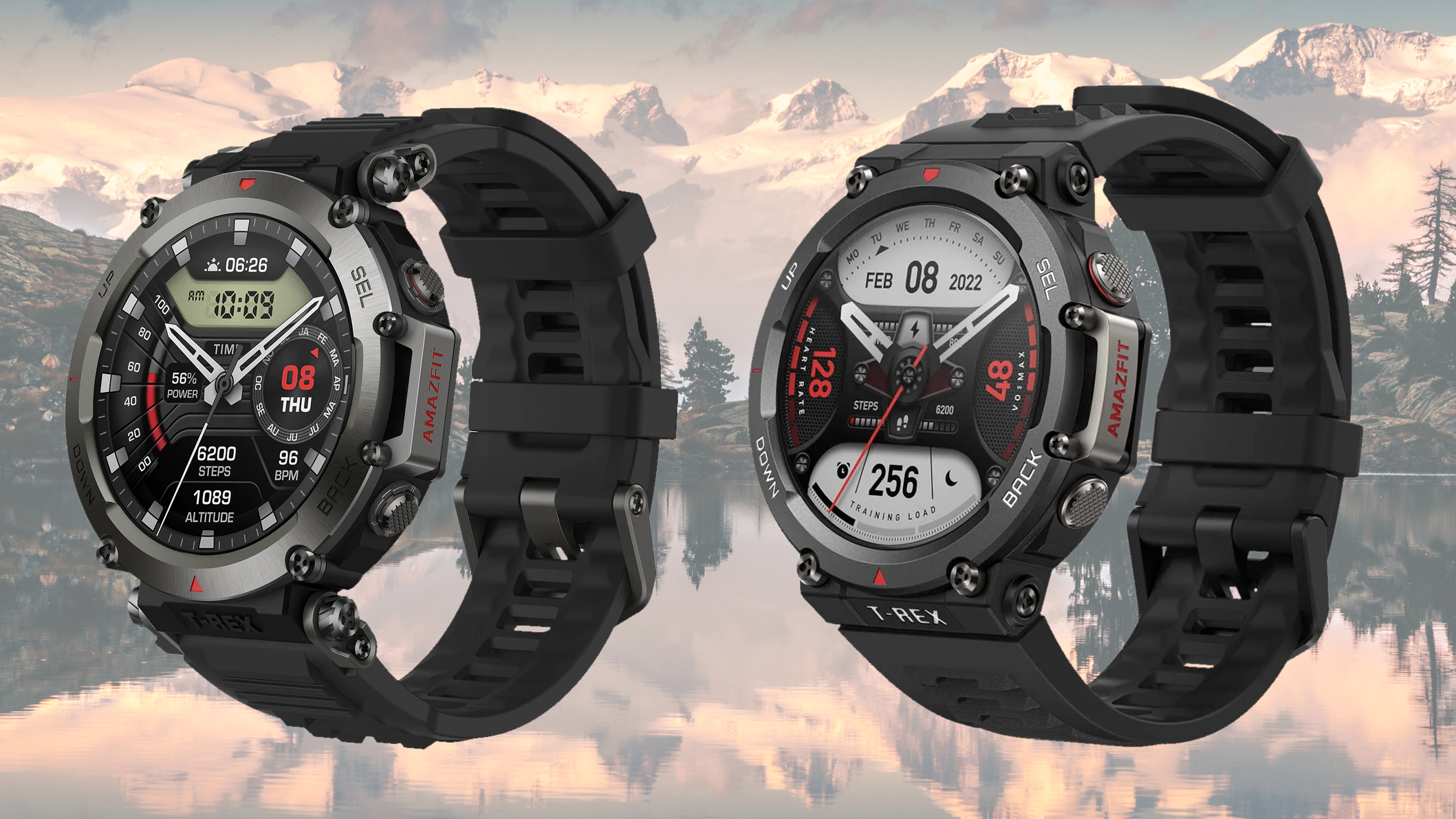
The Amazfit T-Rex 2 and the new Amazfit T-Rex Ultra are both super tough GPS watches designed for heavy use hiking, trail running, and climbing, but there are some key differences that you should know about when you're trying to choose between them.
If price is the main deciding factor, then the slightly older T-Rex 2 is the watch for you. Its list price is substantially lower than that of the T-Rex Ultra, and because it was released last year, you can often find it available at a slight discount. We've rounded up the best prices for you below.
If you want a more stylish looking watch, the T-Rex Ultra is the one. It features more premium materials, including lots of smart stainless steel, and has neat double-articulated lugs to ensure a better fit. It's also seriously heavy (the weightiest GPS watch we've ever tested), but the clever design means the extra heft isn't as noticeable as you might expect.
The other key difference between the two is that only the T-Rex Ultra has wi-fi connectivity. This is important for outdoor explorers, because it makes transferring offline maps and GPX files faster than doing it via Bluetooth.
If you've made up your mind, you'll find today's best offers on both watches below. If not, read on for the full lowdown.
Price
- Amazfit T-Rex 2 is substantially cheaper
- T-Rex 2 is a year old, and often on special offer
The Amazfit T-Rex 2 launched in February 2022 with a list price of $229.99 / £219. Now that it's a year old, you may be able to find it slightly cheaper. We've rounded up today's best deals above.
The Amazfit T-Rex Ultra was released in March 2023 at the higher price of $399.99 / £399. It's not likely to get any significant discounts for several months, at least.
All the latest inspiration, tips and guides to help you plan your next Advnture!
Design
- T-Rex Ultra has more premium materials
- T-Rex 2 comes in more colors
- T-Rex Ultra is much, much heavier
The two watches are very similar at first glance, but look closer and you'll see various details that make the T-Rex Ultra a more premium product, and help explain its higher price tag.
For starters. while both the Amazfit T-Rex Ultra and T-Rex 2 have polymer alloy cases and buckle-fastening silicone rubber straps, the T-Rex Ultra has a stainless steel bezel, back panel and buttons.
Another difference is that the T-Rex 2 has standard lugs attaching the band to the case, but the T-Rex Ultra has double-articulated lugs, which allow it to fit more snugly against different sized wrists.
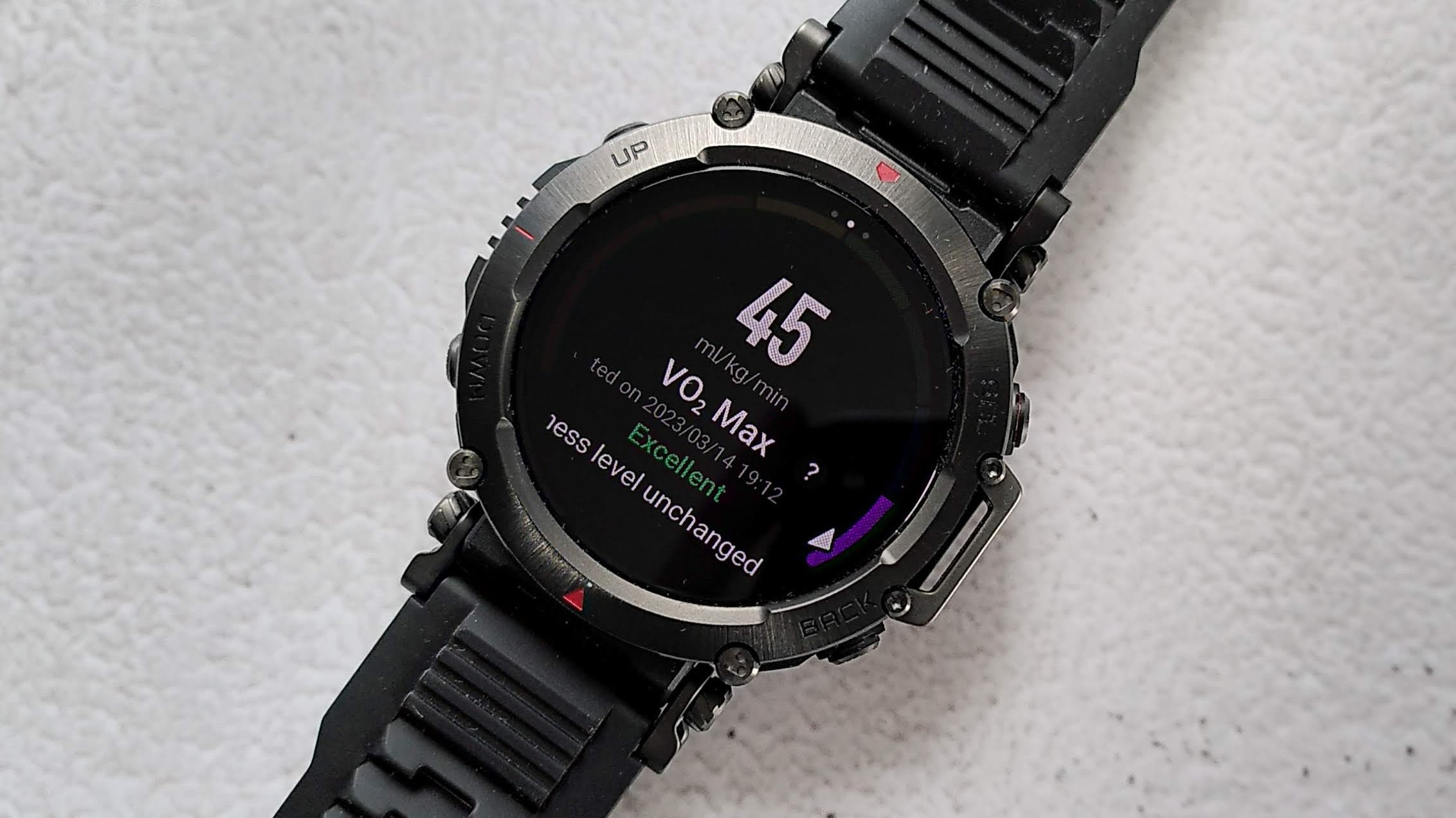
The T-Rex 2's case measures 47.1 x 47.1 x 13.65mm, and the device weighs
66.5g including the strap. The T-Rex Ultra is much heavier thanks to all that additional metal. It's almost exactly the same size at 47.3 x 47.3 x 13.45mm, but our review sample weighed a huge 88g including its strap. Amazfit says it's even heavier, and its official stats claim the case alone if 89g. Either way, it's easily the heaviest GPS watch we've ever tested at Advnture.
Thankfully the double-articulated lugs of the T-Rex Ultra help mitigate the effect of all that weight, and help prevent the watch shifting on your wrist as you swing your arm while running.
Both watches can operate at temperatures as low as -30C (albeit with reduced battery life), and have a water-resistance rating of 10ATM.
The T-Rex 2 comes in four colorways (ember black, black and gold, wild green, and desert khaki), while the T-Rex Ultra comes in just two (abyss black and Sahara).
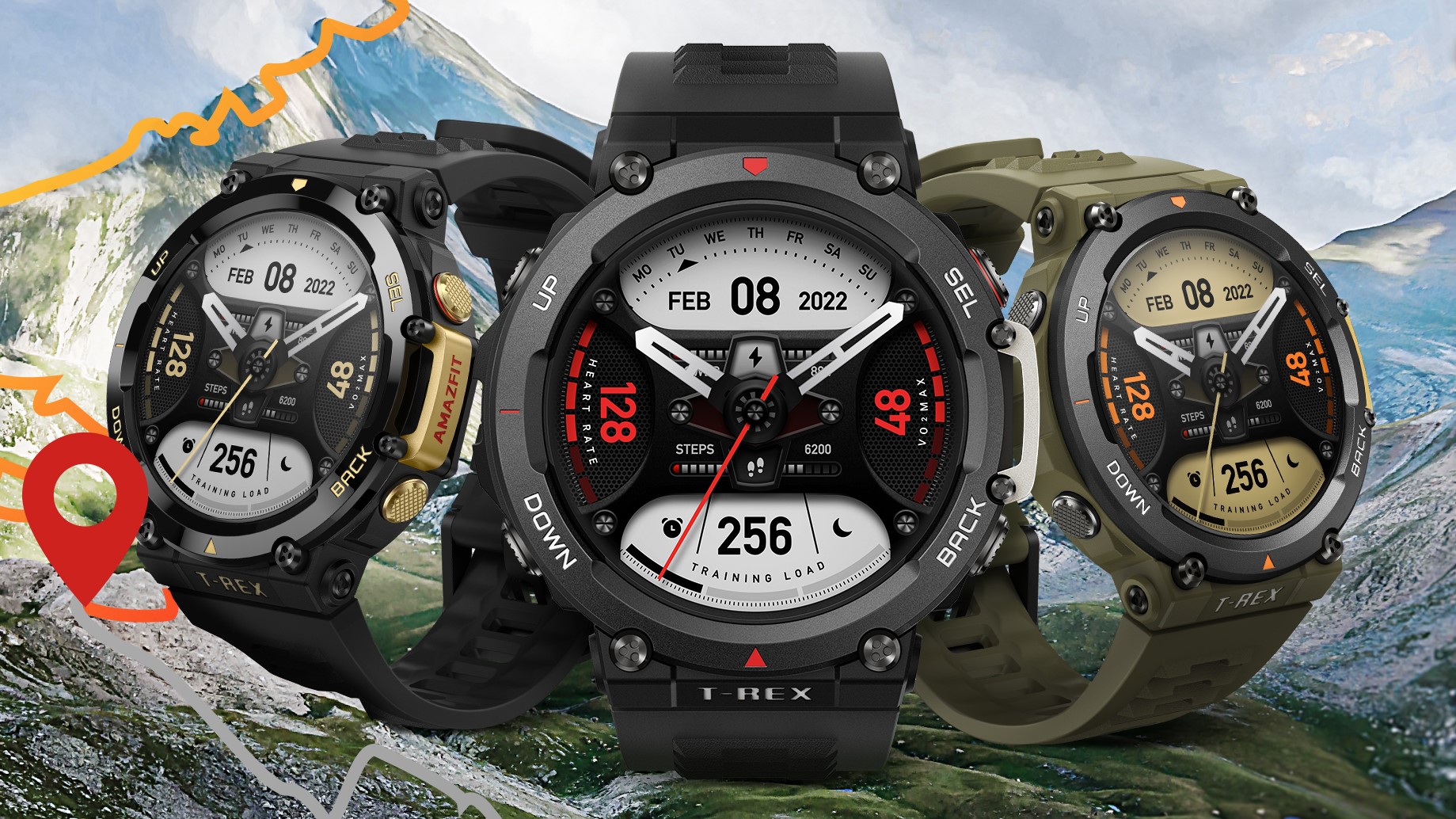
Display
- Both watches have exactly the same AMOLED display
- Maximum brightness 1,000 nits
Both watches have the same high-resolution AMOLED display, which is much brighter and easier to read in tricky lighting conditions than the memory-in-pixel (MiP) screens used by many other GPS watches.
Whichever one you choose, you'll get a screen that measures 1.39in diameter, with a resolution of 454x454 pixels and maximum brightness of 1,000 nits. Having tested both watches, we can confirm that the touch controls are responsive, and scrolling is smooth.
The display is topped with scratch-resistant toughened glass, and the bezel of both watches stands out far enough that you're unlikely to inflict any damage in everyday wear.
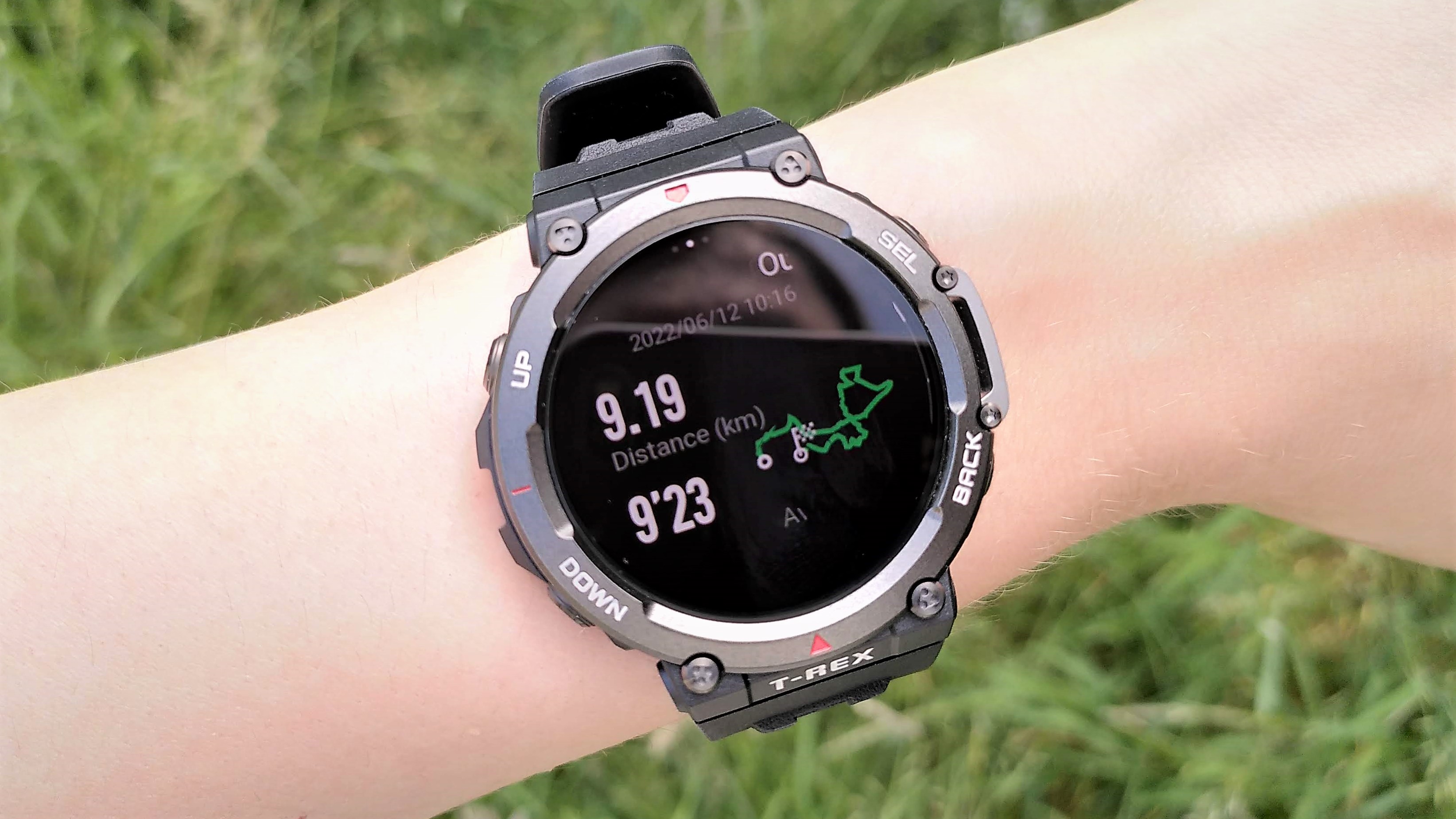
Connectivity
- Only T-Rex Ultra has Wi-Fi
Both watches support BlueTooth, but only the Amazfit T-Rex Pro offer Wi-Fi connectivity. This makes transferring workout data, maps, and GPX route files much faster and more convenient.
Battery life
- T-Rex Ultra has slightly shorter battery life
- Both watches charge fully in around two hours
- Both have same magnetic USB charging cable
Great battery life has always been a hallmark of the T-Rex series, and the T-Rex 2 and Ultra are no exception.
Whichever one you choose, you can expect it to charge fully in around two hours. Both watches are supplied with a proprietary USB charging cable, which attaches to the back of the case magnetically. In our tests, we found it easy to connect and difficult to accidentally dislodge.
The T-Rex 2 lasts around 24 days in typical use, while the T-Rex Ultra lasts about 20 days. In our tests, we found we could go well over two weeks between charges with a GPS-tracked activity ever other day, which is remarkable for an AMOLED watch.
You can expect the T-Rex 2 to last around 50 hours in regular GPS mode, and the T-Rex Ultra about 46 hours.
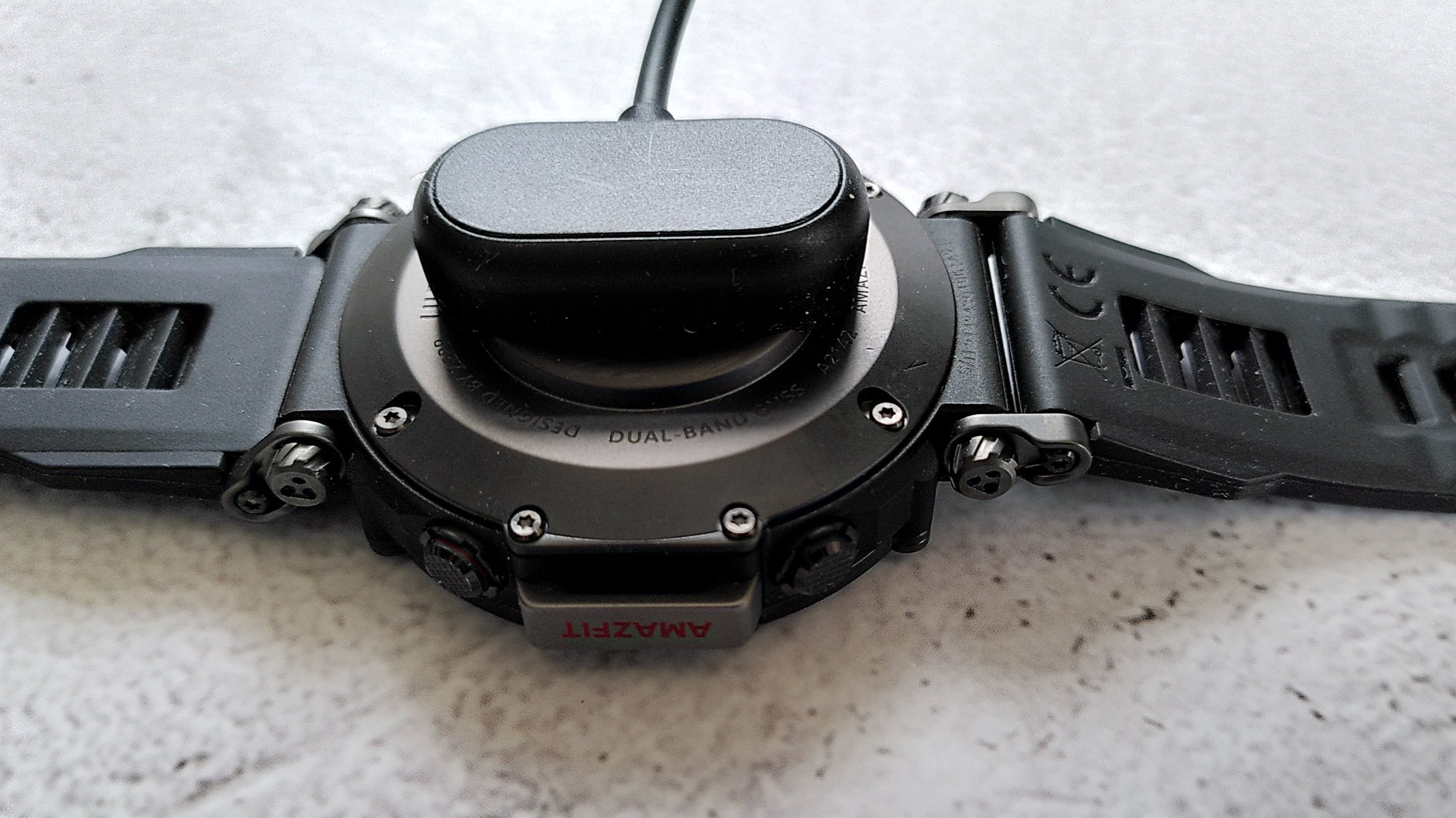
Fitness tracking
- Both have over 150 workout modes
- T-Rex Ultra detects more strength training movements
- Both have dual-frequency GPS
Both have over 150 sports tracking modes, including indoor and outdoor activities, but it's worth bearing in mind that many of the less common options (like square dancing, and even chess and checkers) will only track time, heart rate, and calories burned.
The Amazfit T-Rex 2 can detect eight sports movements (including running, walking, and cycling) and 15 strength training movements automatically. The T-Rex Ultra can detect an additional 10 strength training movements, so while both devices are great for outdoor sports, the Ultra is a better option for regular gym-goers,
Both watches can monitor blood oxygen saturation (SpO2), heart rate, and stress level continuously, and let you perform spot measurements manually. They can also provide warnings of abnormally high or low heart rate, low SpO2, or high stress. You can set the thresholds for these within the Zepp smartphone app (Zepp being Amazfit's parent company).
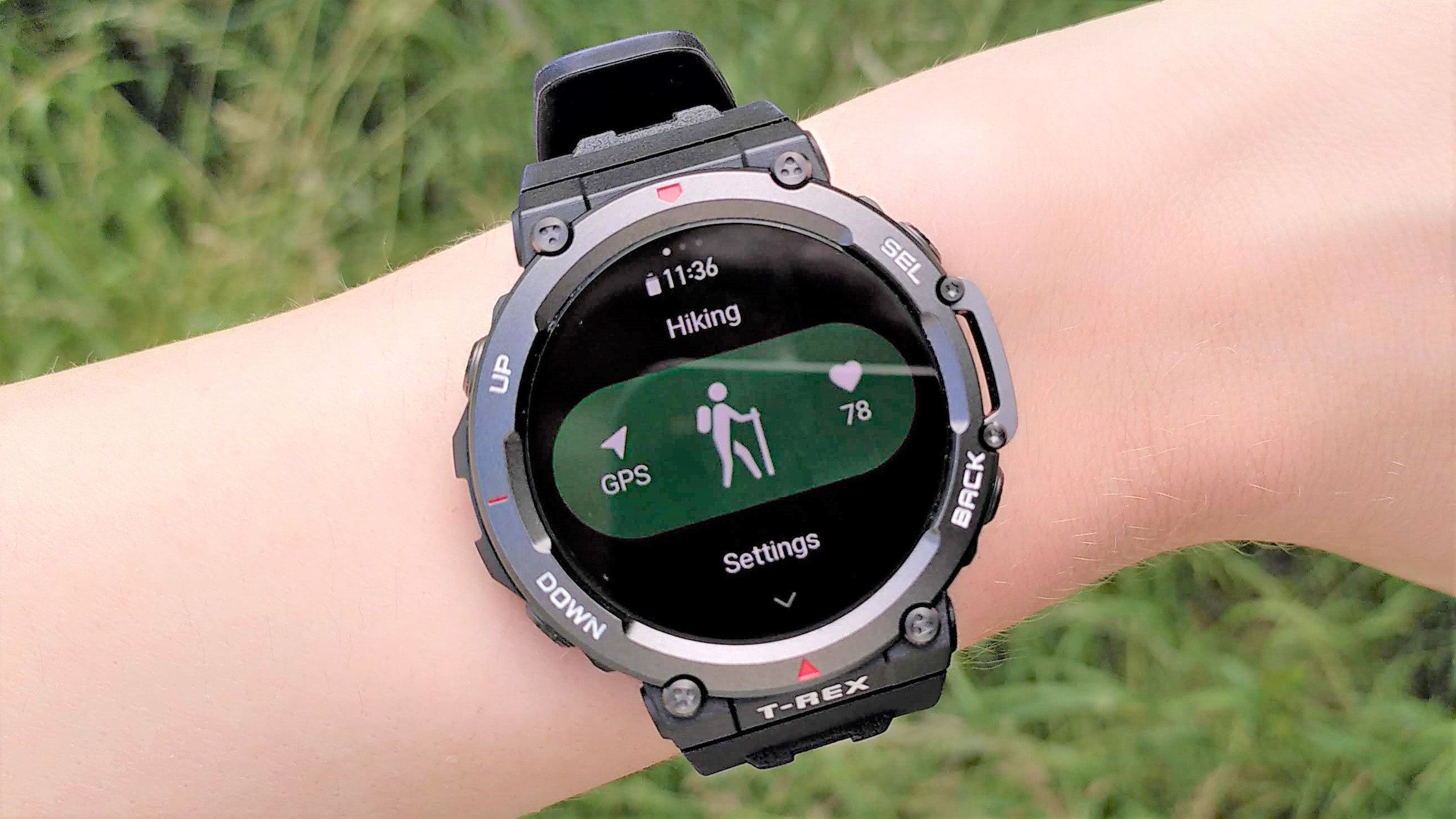
Both watches have dual-frequency GPS, allowing them to pinpoint your location more accurately in tricky locations, such as near cliffs and under dense tree cover.
Both watches also allow you to import GPX routes created using tools like Komoot, but there's no facility for plotting courses in the smartphone app. They can both show you a route back to your starting point as well, but this is only a straight line and doesn't take into account roads, trails, buildings or geological features.
- Best Garmin watches: all the latest models tested and rated

Cat is the editor of Advnture, She’s been a journalist for 15 years, and was fitness and wellbeing editor on TechRadar before joining the Advnture team in 2022. She’s a UK Athletics qualified run leader, and in her spare time enjoys nothing more than lacing up her shoes and hitting the roads and trails (the muddier, the better), usually wearing at least two sports watches.
